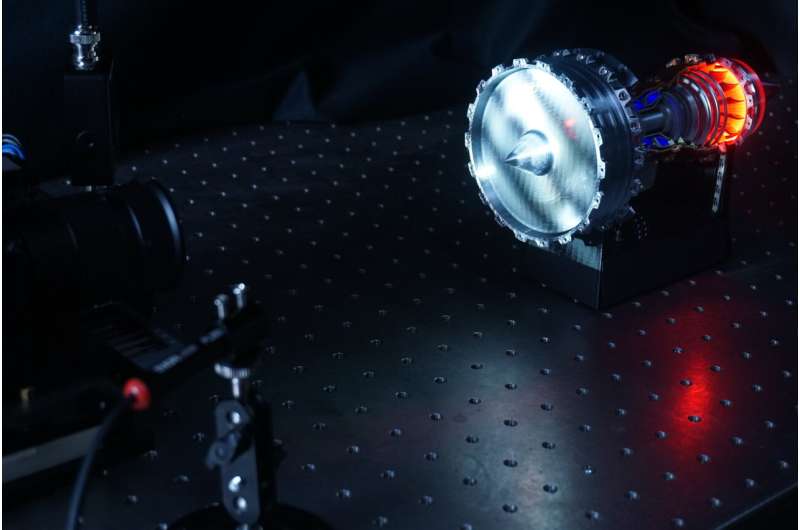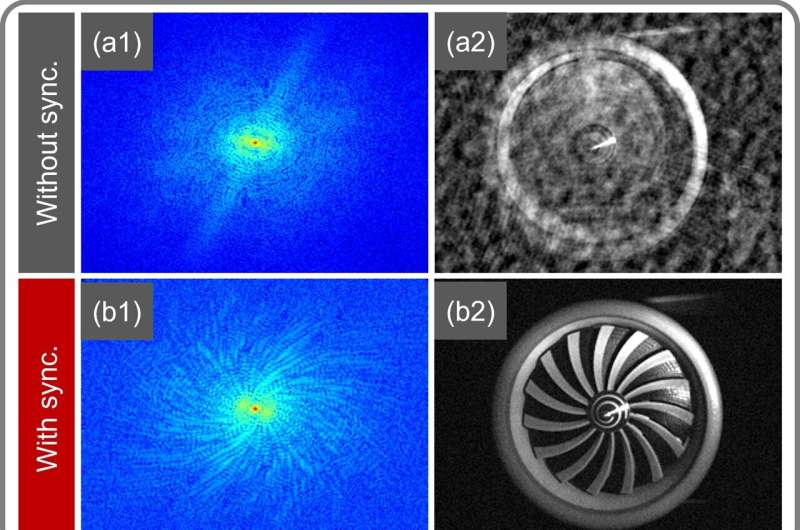In a remarkable fusion of art and science, researchers have unlocked a new way to visualize the fast-spinning motion of objects, bringing a touch of magic to technology. Imagine virtually freezing time to capture breathtaking details that would otherwise whiz past in a blur—this innovative imaging system does just that!

Researchers have crafted an incredible real-time imaging system capable of capturing images of rapidly rotating objects for extended periods. This advancement is vital for industries that rely on moving parts, like turbine blades in power plants and jet engines, enabling early detection of damage such as cracks and wear. This proactive approach will not only enhance safety but also reduce maintenance costs.
“Fast-spinning objects can result in blurred or noisy images, making clear capture a difficult feat,” explained Zibang Zhang from Jinan University, one of the project’s key members. “High-speed cameras might help, but they come with hefty price tags and time constraints. Our innovative technique allows us to ‘virtually freeze time’ by taking advantage of the motion’s repetitiveness.”
In a recent publication in Optics Letters, the team unveiled their groundbreaking system, which utilizes a single-pixel detector to successfully capture images of objects spinning at an astonishing 14,700 revolutions per minute (rpm).
This innovative tool is not just limited to capturing images. It holds promise for identifying wear or fractures in essential machinery like high-speed metal cutting tools, all while the equipment remains in operation. “This opens the door to enhanced safety and longevity for various devices,” Zhang added. Imagine this technology finding its way into manufacturing, aviation inspections, and even common household appliances!
Freezing Time Made Possible
Traditional methods struggle to capture images of rapidly rotating objects due to severe motion blur. While shorter exposure times can enhance clarity, they often lead to grainy images as fewer light particles are captured. High-speed cameras, though fast, are expensive and impractical for prolonged use.
As part of an initiative aimed at optimizing optical solutions for engine inspections, the researchers ingeniously developed a method that overcomes the hurdles involved in imaging rapid motions. The trick lies in using well-structured illumination paired with a single-pixel detector.
This approach involves projecting a pattern of light onto a rotating object and capturing its intensity variations with a single pixel—allowing for detailed imaging without the need for conventional camera components. These single-pixel detectors have unique advantages, providing sensitivity, a broader dynamic range, and quicker response times, making them ideal for fast-moving subjects.
“The essence of our approach is synchronization, essentially creating a moment where time stands still by aligning the target’s motion with the projected patterns,” Zhang elaborated. “By harnessing synchronized illumination, we turned a dynamic imaging issue into a static one.”
Think of it like painting a landscape over several days, where each sunrise sees an artist adding a little bit of detail. Even though the sun doesn’t pause, the artist captures the whole scene by waiting for the sun to rise each day.

Mastering the Art of Capture
For their setup, the researchers employed a high-speed projector equipped with a digital micromirror device, achieving projection speeds of up to 22,000 Hz. This system illuminates the object with varying patterns, and a single-pixel detector collects measurements with each projection. After one complete rotation, the projector seamlessly switches to a new pattern.
Synchronization is the magic ingredient here! By using a laser aimed at a single blade of the spinning object, researchers create backscattered pulses. When the pulse count matches the number of blades, it signals the projector to advance—much like an alarm clock, ensuring precise imaging of the fast-moving object.
In demonstration, the system captured robust still images of a model jet engine spinning at about 2,170 rpm and a CPU cooling fan whirling at around 14,700 rpm. Notably, this method requires no prior knowledge of the object, making it versatile even for items with variable rotational speeds.
Looking ahead, the team aims to refine their system for improved adaptability and ease of integration in real-world applications, including aircraft engines. The horizon gleams with potential!
More information:
Sicheng Long et al, Single-pixel real-time monitoring system for a high-speed rotating object, Optics Letters (2025). DOI: 10.1364/OL.555872
If you would like to see similar science posts like this, click here & share this article with your friends!

